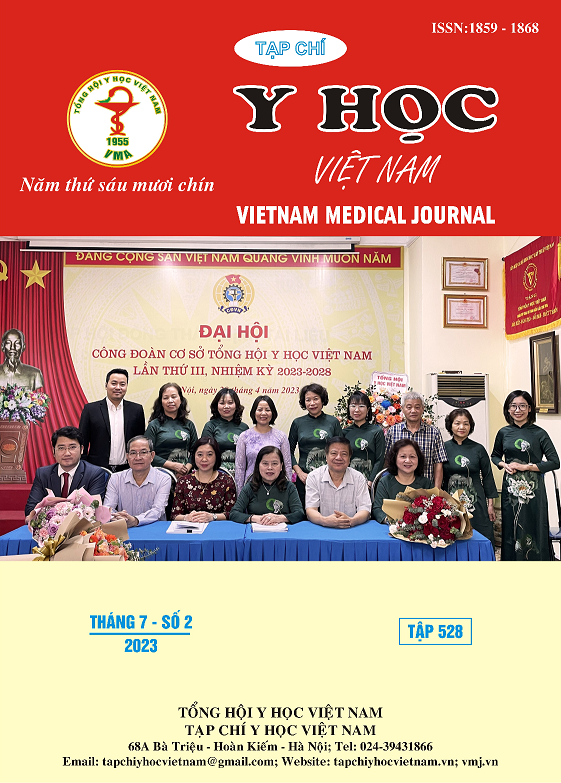A COMPARISON OF CLINICAL OUTCOMES BETWEEN NON-HATCHING AND HATCHING BLASTOCYST BIOPSY METHODS
Main Article Content
Abstract
Objectives: This study aims to compare effects of non-hatching and hatching blastocyst biopsy methods on clinical outcomes. Subjects and methods: This is a retrospective cohort study on 615 single frozen-thawed euploid blastocyst transfer cycles at the center for assisted reproduction of Ha Dong 16A general hospital from March 2018 to September 2022. 247 transferred blastocysts were biopsied by the non-hatching blastocyst biopsy method and 368 transferred blastocysts were biopsied by hatching blastocyst biopsy method. Clinical pregnancy rates were calculated to evaluate effectiveness of the two methods. Results: Clinical pregnancy rates were not statistically significant different between the two biopsy groups (44.6% vs 42.6%, P = 0.626). There was no significant difference in clinical pregnancy rates between the two biopsy groups on blastocysts with similar ICM-TE morphology. Logistic regression analysis showed that the biopsy method was not a factor predicting clinical pregnancy rates (OR: 1.237, 95% CI: 0.856 - 1.790, P = 0.258). Conclusion: Non-hatching and hatching blastocyst biopsy methods are equally effective.
Article Details
Keywords
Blastocyst biopsy, Hatching blastocyst, Non-hatching blastocyst
References
2. Capalbo A., et al. (2014). Correlation between standard blastocyst morphology, euploidy and implantation: an observational study in two centers involving 956 screened blastocysts. Hum Reproduction; 29(6): 1173–1181.
3. Scott K.L., Hong K.H., Scott R.T. (2013). Selecting the optimal time to perform biopsy for preimplantation genetic testing. Fertility and Sterility;100(3): 608–614.
4. Singh S., et al. (2019). Pregnancy rates after pre-implantation genetic screening for aneuploidy are only superior when trophectoderm biopsy is performed on hatching embryos. Journal of Assisted Reproduction and Genetics; 36: 621-628.
5. McArthur S.J., et al. (2005). Pregnancies and live births after trophectoderm biopsy and preimplantation genetic testing of human blastocysts. Fertil Sterility; 84(6): 1628–1636.
6. Gardner D.K., Schoolcraft W.B. (1999). Culture and transfer of human blastocysts. Curr Opin Obstet Gynecol ;11(3): 307–311.
7. Allen M., et al. (2022). Post-warming embryo morphology is associated with live birth: a cohort study of single vitrified-warmed blastocyst transfer cycles. J Assist Reprod Genetics; 39(2): 417–425.
8. Aoyama N., Kato K. (2020). Trophectoderm biopsy for preimplantation genetic test and technical tips: A review. Reprod Med Biology; 19(3): 222–231.


